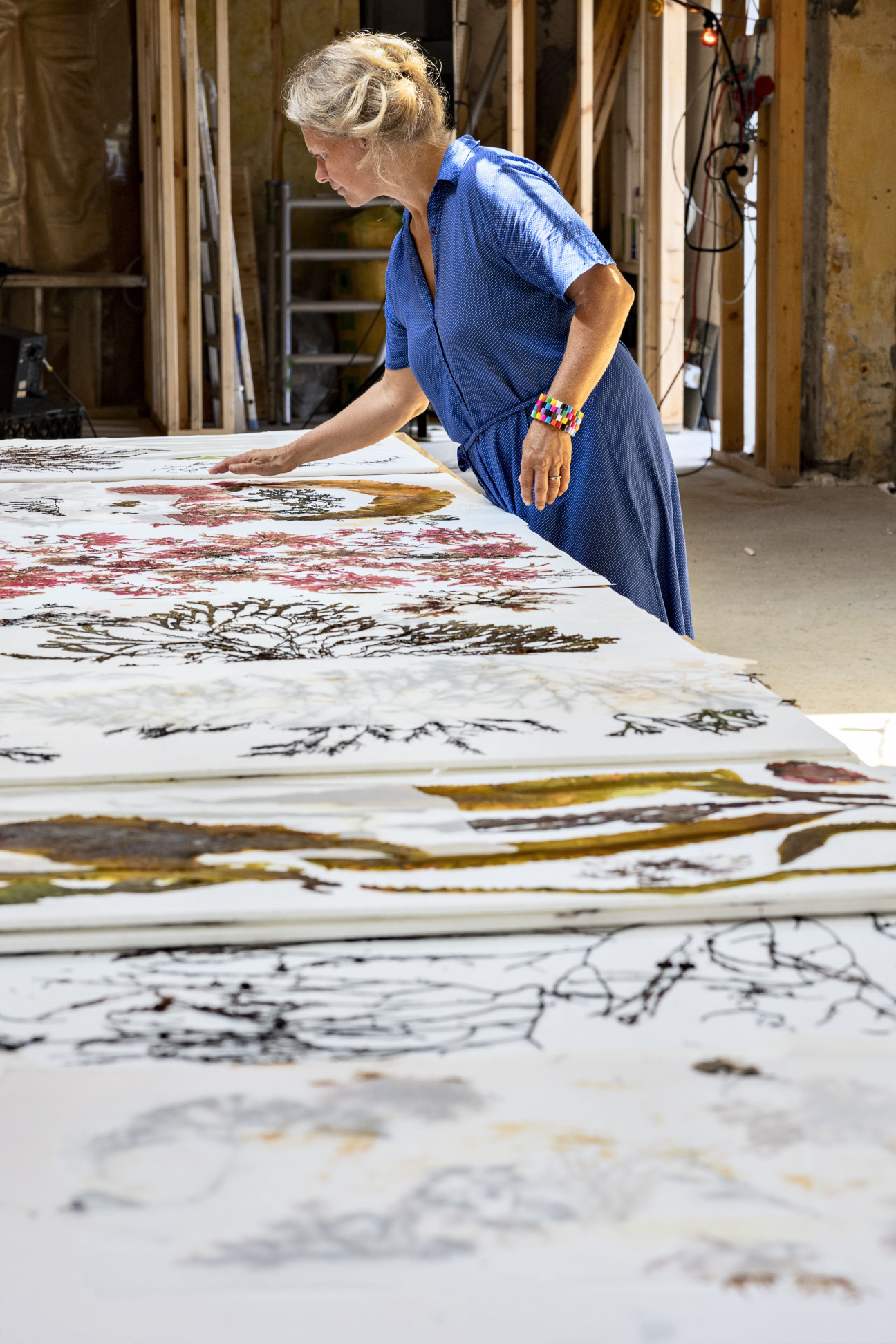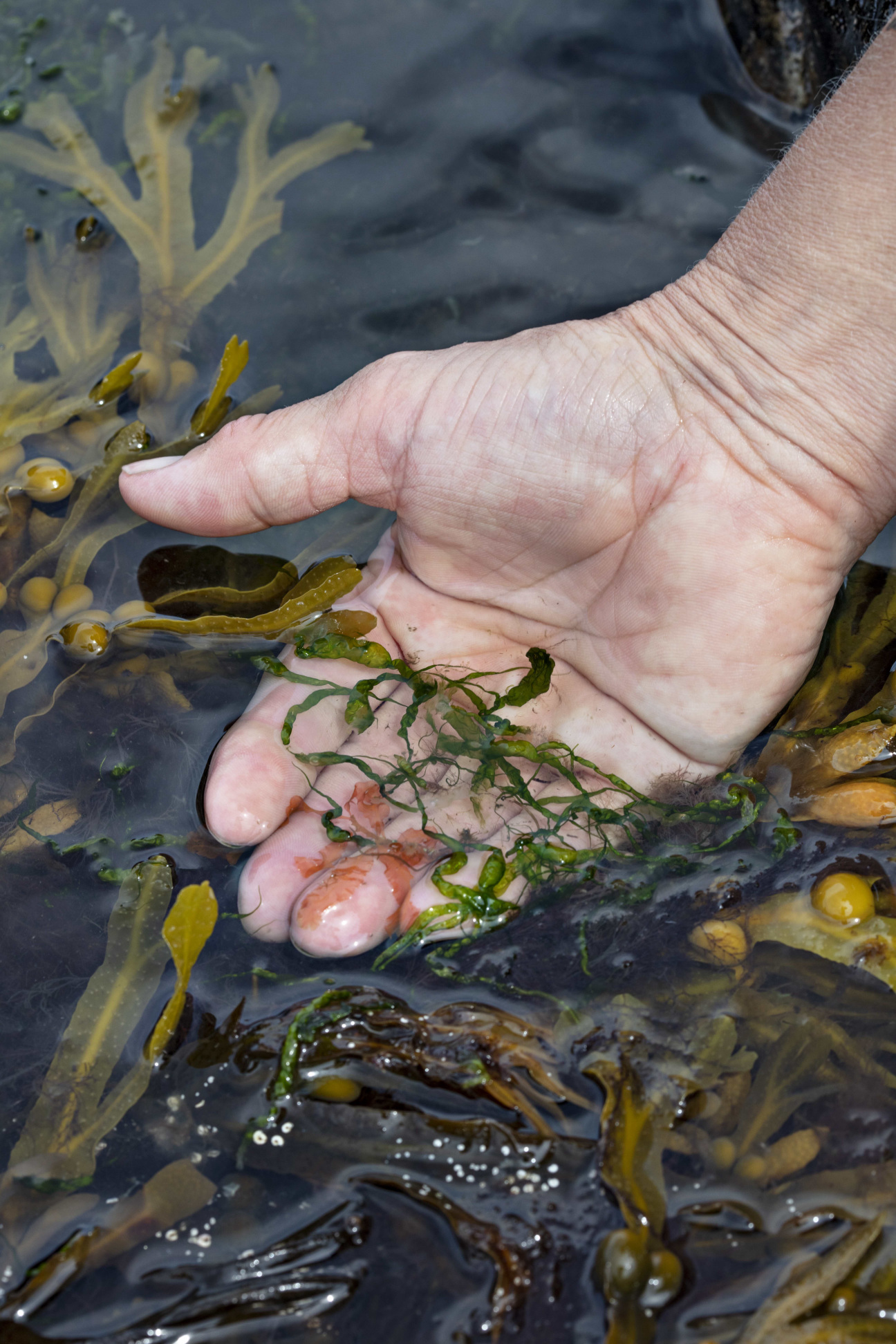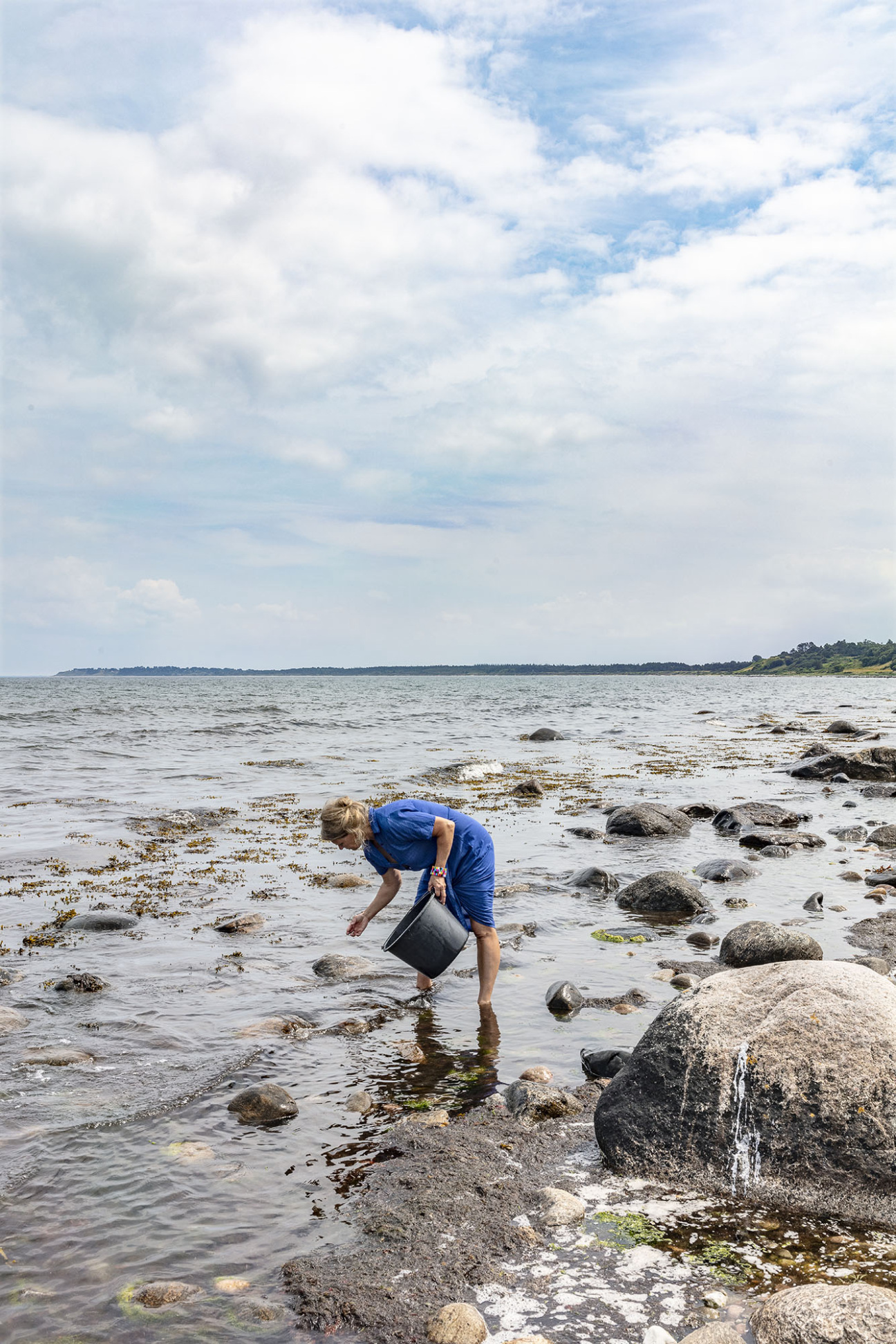
Astrid Krogh’s artwork engages with aspects of nature not visible to the naked eye. She’s more interested in the microscopic and colossal structures that organize the universe. For her latest exhibition at Hostler Burrows Los Angeles, "Arabesque," which runs from Feb. 24 to April 4, the Danish artist has created metalwork tapestries, LED lightboxes, and other works inspired by all manner of nature, from branching seaweed gathered from the Kattegat Strait to dandelions poking through cracked urban sidewalks to the cellular makeup of algal tissue. Ahead of the exhibition, she shares her inspirations, which range from the intellectual (correspondence with a Harvard scientist) to the quotidian (daily ocean dips).
CULTURED: How did your fascination with plants and the agricultural realm begin?
Astrid Krogh: Growing up in rural Denmark, my early immersion in the language of plants and the world of vegetables fueled my understanding of a deeper pattern of possibilities beyond a materialistic worldview. Some years ago, I moved my atelier from central Copenhagen to the countryside.
Here, I have a view of open fields and the sea. I guess that I felt it was time to fill up the well from which I take my inspiration. Two years ago, I decided to make a herbarium. From early spring, I collected plants and flowers around my farm, mostly the wild ones. That process reminded me of the different seasons and how the annual wheel creates a circle.
CULTURED: How does the landscape where you grew up in rural Denmark influence your work?
Krogh: The sky, the earth, and the light are intrinsic parts of my experience from very early on. Now, when I take my daily swim in the sea—also in the wintertime!—I am reminded that nature is to be sensed. When I very literally am bathing in the golden morning sun reflecting in the sea, I am also reminded why gold has been used to illustrate the sun. And I am reminded how and why gold is believed to represent the Divine presence on Earth.

CULTURED: Which artists paved the way for what you do, or who do you see your work in conversation with?
Krogh: Many artists paved my way, but Hilma af Klint is certainly one of them and Agnes Martin is another. As an artist, I find it difficult to place my work in context.
CULTURED: You’ve noted an interest in the interplay of the micro and macro. At what point in the process of making a new piece do you formalize its size and scope?
Krogh: The universe is flooded with patterns, from the smallest particles to intergalactic structures. Throughout my career as a textile artist, I have been fascinated by pattern's ability to connect different cultures and by the fact that patterns speak an intuitive, universal language. When I was asked to apply for a Smithsonian Fellowship a few years ago, I approached one of America's pioneering astrophysicists, Dr. Margaret Geller, of the Harvard-Smithsonian Center for Astrophysics in Massachusetts.
Dr. Geller and her research team were behind the discovery of the largest known structure/pattern in the universe and we started an ongoing correspondence. [It] has opened fundamentally new perspectives on how to look at structures and patterns in life. We usually think of a pattern as something that repeats itself over and over with accuracy. In the universe, there is no place where the structure repeats itself. The structure is a variation over time and space.
Last autumn, when I was working on a site-specific artwork at the pharmaceutical company Novo Nordisk, I was given access to their image material of tissue and cell samples. These structures are of course not the exact same as those of the universe, but striking similarities create the connection from the large to the small. One day this summer, I turned the back of a freshly pressed wildflower and I saw this amazing perfect star-forming ornament! [It was] an ornament that I have seen in many different variations in art and craft objects, but still the sight was pure magic because it again created connection.

CULTURED: Do you often work outside? Where do you go for inspiration?
Krogh: I am lucky to have my atelier at the most wonderful spot on earth so yes, I often work outside, especially in summertime. The outside laboratory is a perfect place to discover the change of daylight and how it interacts with my artworks.
CULTURED: What throughlines do you see in your body of work?
Krogh: I believe that there is a connection between all living things. Previously, I have investigated the structure of the universe, the cosmic web. With this exhibition, I’m trying to build a bridge between the large and small structures of life, between order and disorder, visualized in ornaments and arabesques—a kind of vegetal poetics. I hope to demonstrate that the forms of nature are susceptible to taxonomy but simultaneously resist it.
"Arabesque" is on view through April 4, 2024 at Hostler Burrows in Los Angeles.










 in your life?
in your life?

